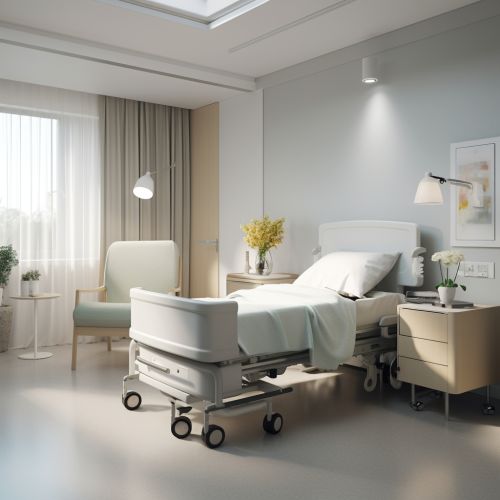Hospital-acquired infection
Introduction
Hospital-acquired infections (HAIs), also known as nosocomial infections, are infections that patients acquire during their stay in a hospital or other healthcare facility. These infections can be caused by a wide range of microorganisms, including bacteria, viruses, and fungi, and can affect any part of the body. They are a significant cause of morbidity and mortality worldwide and pose a serious challenge to healthcare providers.
Epidemiology
The incidence of hospital-acquired infections varies widely from country to country and even from one hospital to another within the same country. According to the CDC, about one in 31 hospital patients in the United States has at least one healthcare-associated infection on any given day. In developing countries, the rates are often much higher due to factors such as poor hygiene practices and inadequate infection control measures.
Types of Hospital-Acquired Infections
There are several types of hospital-acquired infections, each with its own unique set of risk factors and causative agents. These include:
Ventilator-Associated Pneumonia
Ventilator-associated pneumonia (VAP) is a type of lung infection that occurs in people who are on mechanical ventilation through a tube in their mouth or nose. The tube can become contaminated with bacteria or other pathogens, which can then be inhaled into the lungs.
Surgical Site Infections
Surgical site infections (SSIs) occur after surgery in the part of the body where the surgery took place. They can range from superficial infections that affect only the skin to more serious infections that can involve tissues under the skin, organs, or implanted material.
Catheter-Associated Urinary Tract Infections
Catheter-associated urinary tract infections (CAUTIs) are caused when germs enter the urinary tract through a catheter, a tube placed in the bladder to drain urine. These infections can lead to serious complications, including kidney damage and sepsis.
Central Line-Associated Bloodstream Infections
Central line-associated bloodstream infections (CLABSIs) occur when bacteria or other germs enter the bloodstream through a central line, a tube that doctors often place in a large vein to give medications or fluids or to collect blood for medical tests.


Causes and Risk Factors
Hospital-acquired infections can be caused by a variety of microorganisms, including bacteria, viruses, and fungi. The specific pathogens involved often depend on the type of infection and the patient's underlying health conditions. Some of the most common pathogens include Staphylococcus, E. coli, and Pseudomonas.
Risk factors for hospital-acquired infections include:
- Prolonged hospital stay - Use of invasive devices, such as catheters or ventilators - Recent surgery - Immunocompromised state, such as from chemotherapy or HIV/AIDS - Advanced age - Underlying chronic diseases, such as diabetes or chronic obstructive pulmonary disease (COPD)
Prevention and Control
Preventing hospital-acquired infections is a key priority for healthcare providers. Strategies for prevention and control include:
- Hand hygiene: This is the most effective way to prevent the spread of infections in healthcare settings. Healthcare workers should clean their hands before and after every patient contact. - Use of personal protective equipment (PPE): Healthcare workers should wear gloves, gowns, masks, and eye protection as needed to prevent contact with patients' blood, body fluids, secretions, and excretions. - Environmental cleaning: Regular cleaning and disinfection of the hospital environment, including patient rooms and common areas, can help to reduce the spread of pathogens. - Infection control policies and procedures: Hospitals should have comprehensive infection control programs in place, including surveillance for hospital-acquired infections, outbreak management, and antibiotic stewardship programs.
Treatment
The treatment of hospital-acquired infections depends on the type of infection and the specific pathogen involved. In general, treatment involves the use of antimicrobial medications, which may include antibiotics, antiviral drugs, or antifungal drugs. In some cases, surgical intervention may be necessary to remove infected tissue or drain abscesses.
Impact on Healthcare
Hospital-acquired infections have a significant impact on healthcare systems. They increase the length of hospital stays, contribute to increased morbidity and mortality, and result in substantial healthcare costs. In addition, they can lead to a loss of public trust in healthcare institutions.
See Also
- Infection Control - Antibiotic Resistance - Healthcare Quality
